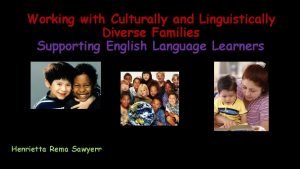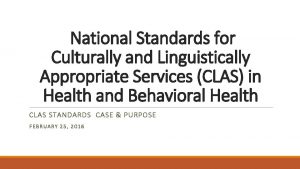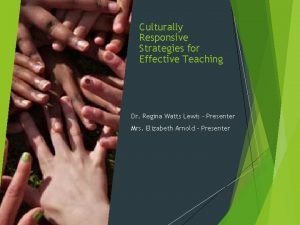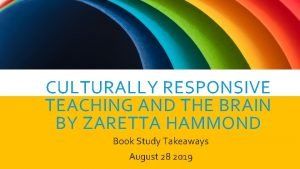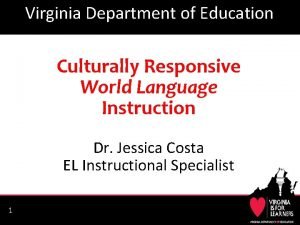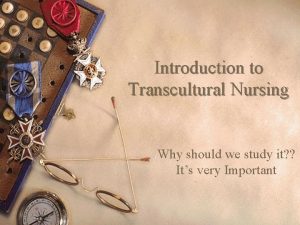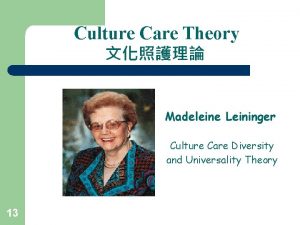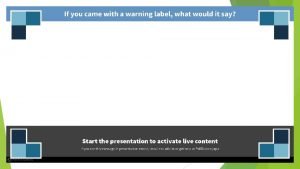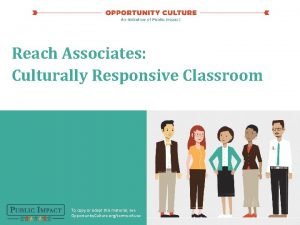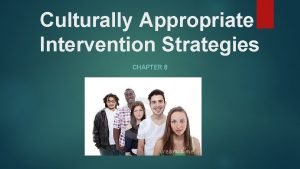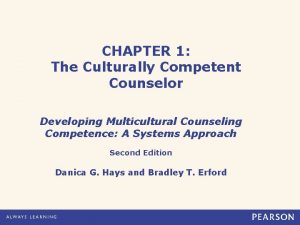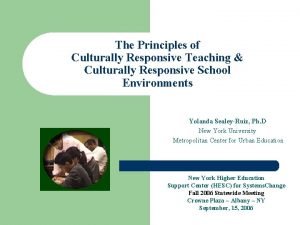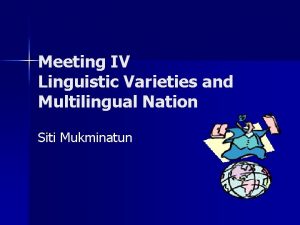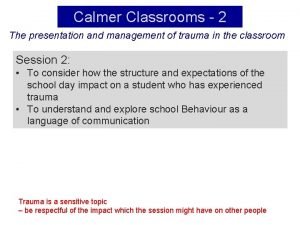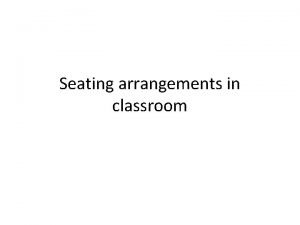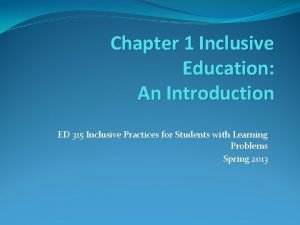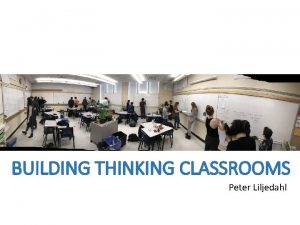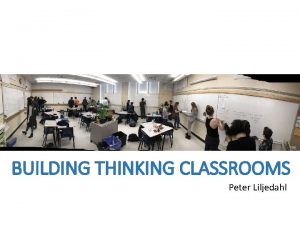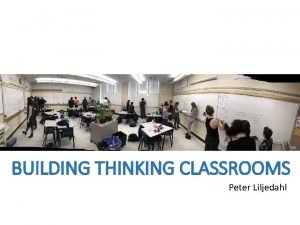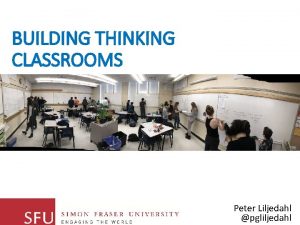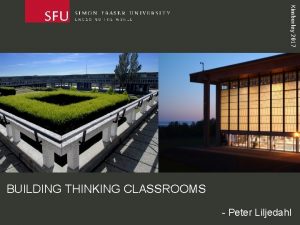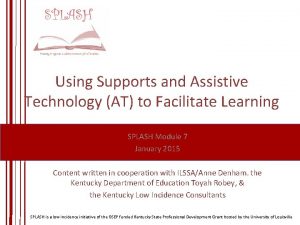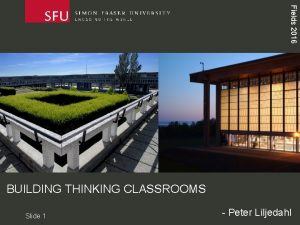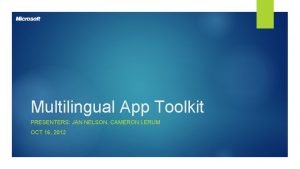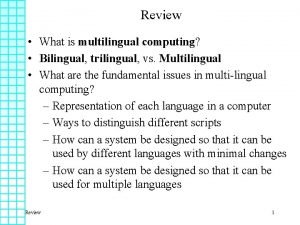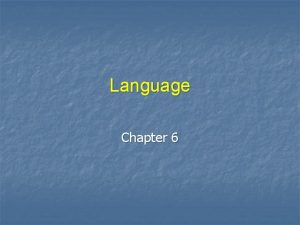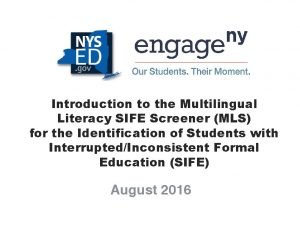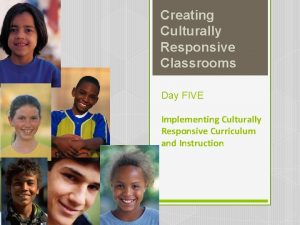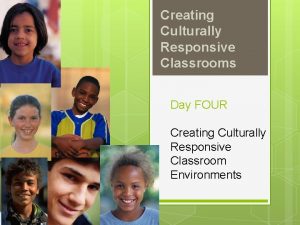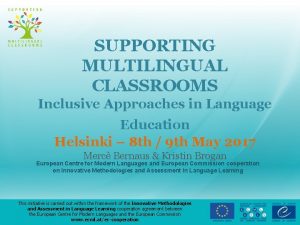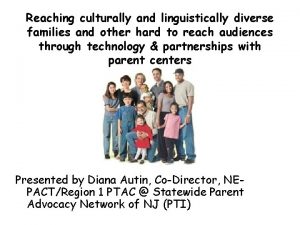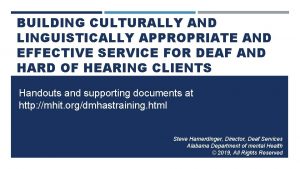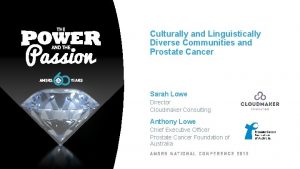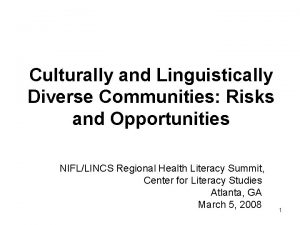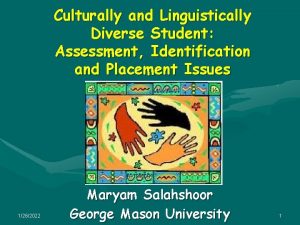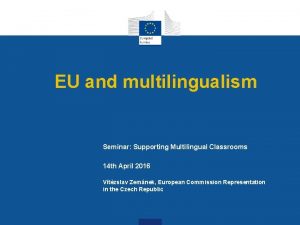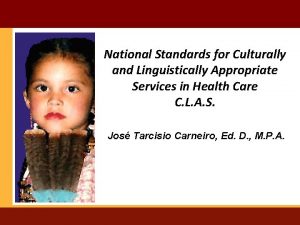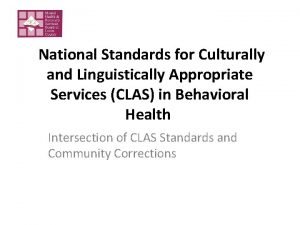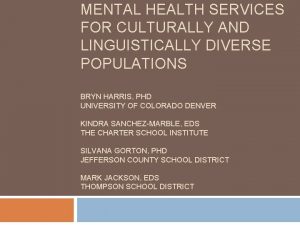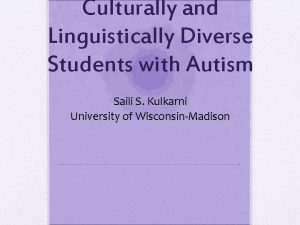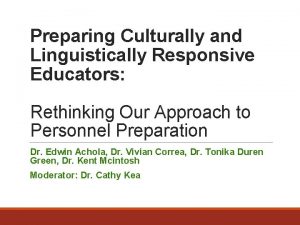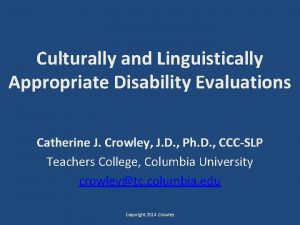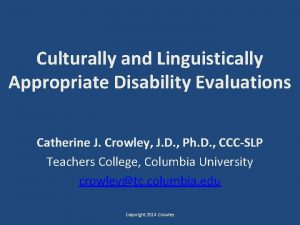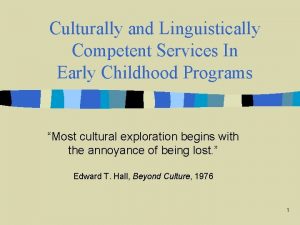Supporting multilingual classrooms Education in linguistically and culturally

































- Slides: 33

Supporting multilingual classrooms Education in linguistically and culturally diverse classrooms European Centre for Modern Languages and European Commission cooperation on Innovative Methodologies and Assessment In Language Learning

Supporting multilingual classrooms Reflecting on myths, realities and challenges to benefit from multilingualism European Centre for Modern Languages and European Commission cooperation on Innovative Methodologies and Assessment In Language Learning

Objectives • To share some information about your own contexts • To be informed about myths and reality regarding multi/plurilingualism • To critically reflect on the challenges and benefits of plurilingualism

Quizcards • In groups of 4 -5, randomly select cards for brief discussion (15 minutes)

Maledive project • Teaching the language of schooling in the context of diversity • Profiles of learners in diverse contexts • Activities for use in the classroom and for teacher reflection



• Learner profiles – Kevin – Neslihan – Yasmine

Challenges: Kevin • Kevin doesn't appreciate why it could be beneficial to learn additional languages: career advancement, openness to the world which is largely multilingual • Kevin displays a negative view of other languages and cultures whether they are dominant (Spanish, Arabic) or minority (Scots, Ingala) • Kevin doesn't make connections between his first language, English and his foreign language at school (Spanish)

Transforming challenges into resources: Kevin • Benefit of have many languages in their linguistic repertoire for their public and private life – jobs, family movement, travel etc • Activities to encourage them to learn about other languages, language families etc • Activities to compare languages; value of transferring knowledge from one language to another

Challenges: Neslihan • Neslihan only uses one language per context – never both (diglossia); why is this a problem? • Neslihan has everyday English (BICS) but struggles with academic English (CALP) • Neslihan doesn't make connections between her first language, English and her foreign language at school (Spanish)

Transforming challenges into resources: Neslihan • Valorising bilingualism/plurilingualism • Activities to transfer learning across languages • Finding out about common errors from Turkish to English

Challenges: Yasmine • Yasmine does not understand what is going on in class • Yasmine (and the teacher) does not know she has academic skills (CALP) in Arabic – these are developed in her first language • Yasmine does not transfer her abilities in other languages or use one language to help her to understand another

Transforming challenges into resources: Yasmine • Explicit learning of language of classroom instructions, routines etc • Learning about life in a Scottish school • Teachers need to find out how to assess her knowledge in other languages as she can’t show it in English • Valorising bilingualism/plurilingualism • Opportunities to use other languages • Activities to transfer learning across languages • Develop her English

Reflecting on myths about plurilingualism • Choose two of the statements and give some reasons why you think they are wrong or right. • Compare your perspective with the statements of Grosjean or Tracy here

Returning to the case studies • Look at the children’s narratives again – How might these be viewed differently and more positively? – Instead of them being perceived just as problems, how might the languages they are exposed to enrich their lives and learning?

Summary • Jot down as many reasons as you can why plurilingualism should be supported. • Keep adding throughout the workshop as other ideas occur to you – including how to support.

Supporting multilingual classrooms Benefiting from linguistic diversity across the curriculum European Centre for Modern Languages and European Commission cooperation on Innovative Methodologies and Assessment In Language Learning

Objectives • To develop a plurilingual dimension in different subjects • To experience ECML resourcesand consider ways of adapting them for the Czech context • To reflect on multilingualism as a resource for all

In pairs, and reflecting back on yesterday: • How might linguistic diversity benefit learning for all children in the classroom? What can they learn? – Write down your ideas – Share with another pair

Conbat+ • Content-based Teaching + plurilingualism • Enriches other subjects with a plurilingual dimension • Is context-dependent • Aims at helping learners develop their multiple identities

Group work • You will work through one of four packs according to relevance, doing and discussing the activities: – Motion in the Ocean (ages 9 -14) – Our home, Our world (ages 10 -12) – Chocolate (ages 10 -14) – Coffee (ages 12 -15)

Focus questions 1. What are the benefits to plurilingual children? 2. What are the benefits to all children? 3. What exactly would children learn from these resources and activities? 4. How might they be adapted for your own context? (subject, age group etc) 5. Can you think of other activities in other subjects? 6. What obstacles might there be to you doing this kind of activity? How might you get over them in order to include at least some aspects of this kind of learning?

Supporting multilingual classrooms Supporting children with the language of schooling across the curriculum European Centre for Modern Languages and European Commission cooperation on Innovative Methodologies and Assessment In Language Learning

Objectives • To develop practical approaches to supporting plurilingual children to access the language of schooling across the curriculum • To share your own strategies and develop them • To explore scaffolding strategies • To develop differentiated teaching materials • To consider the role of formative assessment

Moises in school • Watch the start of the film about Moises 1. What do you learn about Moises? 2. What does Moises do to try to participate in the lesson? 3. How can the teacher help him? 4. What would you do to help Moises in the classroom? What happens or might happen in your school?

Scaffolding learning • The term “scaffolding” refers to the support that enhances learners’ ability to develop new knowledge and skills that are transferable to new contexts. • Scaffolding is by definition temporary help that assists students to become more independent and capable of handling learning more on their own. What a student can with support today, (s)he will be able to do alone tomorrow. Scaffolding makes the students aware of how to do the learning tasks and how to learn new content, so that they will be better able to complete tasks on their own. (from Maledive)

Sharing ideas for scaffolding learning (15 minutes) Group discussion • How might you adjust the basic tasks on the handout? • Look at the handout on scaffolding at macro and micro levels and share which you already do and which you might try. • Look at Maledive on Scaffolding

Pluriliteracies Teaching for Learning • Shows teachers and materials developers ways of fostering deep learning by paying attention to the development of students‘ subject specific literacies ØFurther ideas on scaffolding ØIdeas about how to differentiate materials

Group work • In groups, look at the types of activity in one of the three Pluriliteracies packs of worksheets: – Avalanches (novice level) – Chemistry: The Process of Corrosion Materials (novice level) – Desertification (intermediate level)

Focused questions • List as many ways as you can find in which the sheets offer scaffolded/differentiated activities to support a range of different learners • Can you add to the list of ideas from your own practice?

Language Descriptors • These resources highlight challenges for young learners in subject classes where the language of instruction is not their first language. • Focus on minimum language standards in history/civics and mathematics for learners aged 12/13 and 15/16. • The language descriptors are linked to CEFR levels A 2, B 1 and B 2. • Available in six languages (English, French, Finnish, Lithuanian, Norwegian, Portuguese).

Adapting the descriptors for self-assessment • Do you use self-assessment? • How might these Language Descriptors be used? • Can they also be used by the three children in our initial Learner Profiles to reflect on all of the languages in their repertoire?
 Working with culturally and linguistically diverse families
Working with culturally and linguistically diverse families National culturally and linguistically appropriate services
National culturally and linguistically appropriate services Culturally responsive vs culturally relevant
Culturally responsive vs culturally relevant Culturally responsive teaching in music education
Culturally responsive teaching in music education Culturally responsive teaching and the brain slides
Culturally responsive teaching and the brain slides Cultural deprivation
Cultural deprivation Vdoe culturally responsive teaching
Vdoe culturally responsive teaching Culturally congruent care definition
Culturally congruent care definition Culturally congruent care
Culturally congruent care Classroom
Classroom Reach associates
Reach associates Culturally appropriate intervention strategies
Culturally appropriate intervention strategies Culturally competent counselor
Culturally competent counselor Culturally relevant pedagogy
Culturally relevant pedagogy Linguistic varieties and multilingual nations
Linguistic varieties and multilingual nations Calmer classroom
Calmer classroom Vocareum aws
Vocareum aws Physical arrangement of the classroom
Physical arrangement of the classroom Global classroom position paper
Global classroom position paper Inclusive chapter 1
Inclusive chapter 1 Peter liljedahl
Peter liljedahl Peter liljedahl
Peter liljedahl Peter liljedahl thinking classrooms
Peter liljedahl thinking classrooms Thinking classroom
Thinking classroom Peter liljedahl building thinking classrooms
Peter liljedahl building thinking classrooms Bringing the universe to america's classrooms
Bringing the universe to america's classrooms Noita eye puzzle
Noita eye puzzle Building thinking classrooms
Building thinking classrooms Multilingual e-learning
Multilingual e-learning Multilingual app toolkit
Multilingual app toolkit Multilingual computing
Multilingual computing Language choice in multilingual communities
Language choice in multilingual communities Fertile crescent
Fertile crescent Mls sife screener
Mls sife screener
